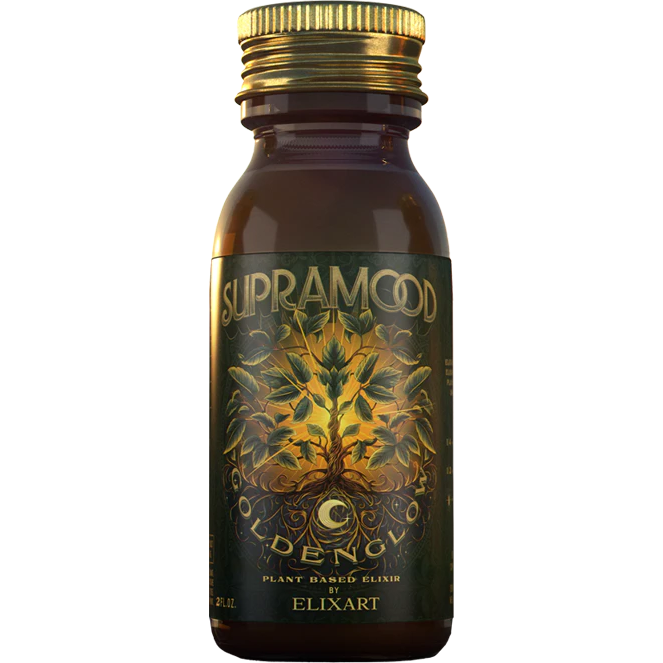Herbal remedies have played a significant role in various cultures throughout history. For centuries, societies have turned to plants for their healing properties, using them to treat illnesses and promote overall well-being.
Herbal remedies are an essential part of traditional medicine systems such as Ayurveda and Traditional Chinese Medicine (TCM). These systems focus on a holistic approach to healing, considering the body, mind, and environment as interconnected aspects of health.
Studying these traditional medicine systems can provide valuable insights for modern healthcare. By examining ancient texts and practices, we may discover effective treatments that can be integrated with contemporary medical methods.
Key takeaway: Understanding the importance of Ayurveda and other traditional systems can broaden our knowledge and improve modern healthcare solutions.
Understanding Traditional Medicine Systems
Ayurveda: The Science of Life
Ayurveda, often translated as "The Science of Life," is one of the oldest holistic healing systems, originating in India over 3,000 years ago. Its development can be traced back to ancient Hindu texts that date as far back as the second millennium BCE.
Historical Timeline of Ayurveda's Development
- Second Millennium BCE: Early mentions of medicinal plants and treatments are found in the Rigveda, one of the oldest sacred texts.
- 800-200 BCE: The core principles and practices of Ayurveda are formalized in the Charaka Samhita and Sushruta Samhita.
- 500 CE onwards: Ayurveda flourishes under the Gupta Empire and continues to evolve through centuries, influencing other traditional medicine systems like Unani and Siddha.
Key Texts That Shaped Ayurvedic Practices
The Charaka Samhita is a foundational text that offers extensive insights into internal medicine. Authored by Charaka, it details:
- Descriptions of various diseases and their treatments
- Principles of diagnosis and patient examination
- Comprehensive lists of medicinal herbs and formulations
The Sushruta Samhita, attributed to Sushruta, focuses on surgical techniques, including:
- Detailed surgical procedures
- Anatomical descriptions
- Postoperative care with herbal remedies
These texts remain crucial references for Ayurvedic practitioners today.
Core Principles of Ayurveda and Their Relevance Today
Ayurveda is rooted in a set of core principles that emphasize balance and harmony within the body, mind, and environment. Key concepts include:
- Doshas: These are bioenergetic forces that govern physical and mental processes:
- Vata: Governs movement and communication.
- Pitta: Controls digestion and metabolism.
- Kapha: Responsible for growth, structure, and lubrication.
- Dhatus: These are bodily tissues that support overall health:
- Rasa (Plasma): Nourishment
- Rakta (Blood): Vitality
- Mamsa (Muscle): Strength
- Meda (Fat): Lubrication
- Asthi (Bone): Support
- Majja (Marrow): Immunity
- Shukra (Reproductive tissue): Procreation
- Agni (Digestive Fire): Central to maintaining health by driving digestion, absorption, and assimilation of nutrients.
- Prakriti (Constitution): Each individual has a unique constitution influenced by the balance of doshas, which informs personalized treatment approaches.
- Dinacharya (Daily Routines) & Ritucharya (Seasonal Routines): Guidelines for lifestyle practices that align with natural cycles to maintain balance.
Ayurvedic principles emphasize preventive care through lifestyle modifications, diet, and herbal remedies. These practices promote long-term well-being by addressing root causes rather than merely alleviating symptoms.
Understanding these principles can offer valuable insights into integrating ancient wisdom with modern healthcare practices. By recognizing the comprehensive nature of Ayurveda's approach to health, you gain a deeper appreciation for its enduring relevance in today's wellness landscape.
Other Traditional Systems of Medicine
Traditional Chinese Medicine (TCM) emphasizes the harmony between the human body and nature. TCM herbal remedies often consist of multiple herbs combined to enhance therapeutic effects while minimizing side effects. A well-known example is artemisinin derived from the wormwood plant, which has proven effective against malaria.
Comparatively, Unani Medicine originated in ancient Greece and was further developed by Arab and Persian scholars. It focuses on balancing bodily humors: blood, phlegm, yellow bile, and black bile. Herbal remedies are a cornerstone of Unani treatments, addressing imbalances through natural compounds.
Siddha Medicine, another ancient system from South India, integrates spirituality and physical health. It categorizes diseases based on three humors similar to Ayurveda but includes unique botanical remedies. The Siddha system is known for its extensive use of metals and minerals alongside herbs.
These traditional systems highlight the diversity and significance of herbal remedies in holistic healing. The historical significance is evident as these practices have evolved yet maintained their core principles in modern applications. Recognizing this diversity enhances our understanding of global traditional medicine systems and their role in contemporary healthcare.
The Holistic Approach to Healing in Traditional Practices
Holistic healing in traditional practices emphasizes treating the whole person—mind, body, and spirit. This approach seeks to achieve optimal health by balancing the different aspects of an individual's well-being rather than focusing solely on symptomatic treatment.
Connection Between Body Constitution and Plant-Based Treatments
Traditional systems like Ayurveda, which is a holistic tradition that aligns mind, body, and spirit, operate on the principle that each person's body constitution is unique. Plant-based medicines are tailored to individual needs, ensuring that treatments are effective and harmonious with one's specific physiological and psychological makeup.
Role of the Five Elements in Ayurvedic Healing
Ayurveda identifies five fundamental elements present in all living and non-living things:
- Earth (Prithvi)
- Water (Jala)
- Fire (Agni)
- Air (Vayu)
- Ether (Akasha)
These elements combine in various ways to form the three doshas, which govern all physiological activities.
Doshas, Dhatus, and Their Role in Herbal Remedies
Explanation of Doshas (Vata, Pitta, Kapha)
The three doshas—Vata, Pitta, and Kapha—are central to Ayurveda:
- Vata: Composed of air and ether, Vata governs movement and is associated with qualities such as dryness, lightness, and coldness.
- Pitta: Made up of fire and water, Pitta controls digestion and metabolism. It is characterized by heat, sharpness, and intensity.
- Kapha: Consisting of earth and water, Kapha provides structure and lubrication. It embodies heaviness, stability, and coolness.
Each individual has a unique balance of these doshas. Herbal remedies are designed to restore equilibrium when this balance is disrupted.
Understanding Dhatus (Tissues) and Their Relationship with Herbal Remedies
In Ayurveda, dhatus refer to the seven tissues that support the body:
- Rasa (Plasma)
- Rakta (Blood)
- Mamsa (Muscle)
- Meda (Fat)
- Asthi (Bone)
- Majja (Bone Marrow)
- Shukra (Reproductive Tissue)
The health of these dhatus determines overall wellness. Herbal treatments aim to nourish these tissues directly or indirectly by balancing the doshas that influence them.
By understanding how doshas and dhatus interact within the body's natural framework, Ayurveda offers a comprehensive system for using plant-based medicines effectively. This holistic approach not only treats illnesses but also promotes long-term health by maintaining balance among all bodily systems.
Modern Science Meets Ancient Wisdom: Herbal Drug Discovery Today
The combination of traditional knowledge and modern scientific validation is revolutionizing the field of herbal drug discovery. The pharmaceutical industry is now recognizing the value of ancient herbal remedies, leading to a renewed interest in these proven treatments.
Transition from Traditional Knowledge to Modern Scientific Validation
- Traditional systems like Ayurveda and TCM have long utilized plant-based treatments for various ailments.
- Modern science now validates these practices through rigorous research methodologies.
- This transition involves analyzing historical texts, conducting laboratory experiments, and performing clinical trials to establish efficacy and safety.
Case Studies on Successful Herbal Drug Discoveries
One prominent example is artemisinin, derived from the wormwood plant (Artemisia annua) used in TCM:
- Artemisinin has proven highly effective against malaria, earning global recognition.
- Another notable case is the anti-cancer drug Paclitaxel, originally extracted from the Pacific yew tree (Taxus brevifolia).
- These discoveries highlight how ancient wisdom can lead to groundbreaking medical advancements.
Integration of Genomics in Understanding Herbal Efficacy
Genomic technologies offer deeper insights into how herbal remedies work at a molecular level:
- Researchers utilize genomics to identify active compounds within herbs.
- This approach helps understand the interactions between multiple compounds and their combined therapeutic effects.
- Genomics aids in developing personalized medicine by aligning herbal treatments with individual genetic profiles.
Exploring the Ancient Wisdom of Herbal Remedies
Combining traditional knowledge with modern scientific tools provides a comprehensive understanding of herbal efficacy. This synergy not only validates ancient practices but also paves the way for innovative therapies that integrate the best of both worlds.
Pancha Karma: Detoxification through Herbs in Ayurveda
Pancha Karma, a cornerstone of Ayurveda, represents an intricate system of detoxification therapies aimed at purifying the body and mind. Rooted in ancient practices, Pancha Karma translates to "five actions" or "five treatments," each designed to cleanse the body of toxins and restore balance.
Overview of Pancha Karma as a Detoxification Method
Pancha Karma encompasses five primary procedures:
- Vamana (Therapeutic Vomiting): Targets Kapha dosha imbalances by inducing vomiting using herbal emetics.
- Virechana (Purgation Therapy): Focuses on clearing Pitta dosha through the administration of laxatives.
- Basti (Enema Therapy): Utilizes herbal decoctions or oils introduced into the colon to balance Vata dosha.
- Nasya (Nasal Administration): Involves administering herbal oils or powders through the nasal passages to clear toxins from the head and neck region.
- Raktamokshana (Bloodletting): Aimed at purifying blood to alleviate Pitta-related disorders.
Importance of Herbs in Cleansing Processes
Herbs play a critical role in Pancha Karma therapies:
- Triphala: A blend of three fruits (Amalaki, Bibhitaki, Haritaki), commonly used for its mild laxative properties.
- Neem: Recognized for its blood-purifying qualities.
- Castor Oil: Frequently used in Virechana for its effective purgative action.
These herbs are selected based on their properties to target specific doshas and facilitate the expulsion of toxins.
Benefits and Procedures Associated with Pancha Karma
The benefits of Pancha Karma extend beyond physical detoxification:
- Enhanced digestion and metabolism
- Improved mental clarity and emotional stability
- Strengthened immune system
Each procedure is tailored to individual needs, beginning with a preparatory phase that includes oleation (internal and external oil application) and fomentation (sweating). This preparation helps loosen toxins, making them easier to eliminate during the main detoxification procedures.
By integrating these time-honored practices with modern wellness routines, you can achieve holistic health that addresses both physical and mental well-being.
Learning About Herbal Remedies: Incorporating Ancient Wisdom into Modern Wellness Routines
Exploring traditional herbal remedies can be a transformative step toward holistic health. Familiarizing yourself with common herbs used in ancient practices allows you to better understand their potential benefits.
Common Herbs and Their Uses
- Turmeric:
- Anti-inflammatory properties
- Boosts immune function
- Supports digestive health
- Ginger:
- Alleviates nausea and vomiting
- Reduces muscle pain and soreness
- Improves digestion
- Ashwagandha:
- Reduces stress and anxiety
- Enhances brain function
- Increases stamina and endurance
- Holy Basil (Tulsi):
- Promotes respiratory health
- Balances blood sugar levels
- Acts as a natural adaptogen
Health Benefits of Specific Herbal Treatments
Integrating these herbs into your daily routine can yield numerous health benefits:
- Inflammation Reduction: Turmeric's active compound, curcumin, has been shown to reduce inflammation, which is crucial for managing chronic diseases.
- Digestive Aid: Ginger's bioactive compounds help alleviate gastrointestinal issues, making it a staple in many traditional remedies.
- Stress Relief: Ashwagandha is renowned for its adaptogenic properties, helping to mitigate the effects of stress on the body.
- Respiratory Support: Holy Basil is frequently used in Ayurvedic medicine to support lung function and treat respiratory conditions.
Understanding and incorporating these ancient herbal remedies into modern wellness routines can provide a balanced approach to health, blending time-honored wisdom with contemporary practices.
Conclusion: Embracing Ancient Wisdom for a Healthier Future
Herbal remedies are becoming more important in modern medicine. Traditional systems like Ayurveda and TCM have a wealth of knowledge that, when combined with current scientific research, can bring about significant health benefits.
Key Points:
- Holistic Healing: Herbal remedies take a holistic approach to health, looking at the connections between the body, mind, and spirit. This viewpoint can enhance modern medicine, which often concentrates on specific symptoms.
- Personalized Medicine: Systems like Ayurveda customize treatments to individual constitutions (doshas), providing a personalized approach that is gaining popularity in today's healthcare environment.
- Scientific Validation: Modern science continues to confirm the effectiveness of various herbs used in traditional practices. For example, artemisinin from TCM has proven effective against malaria, demonstrating the potential of ancient wisdom in solving modern health issues.
- Sustainability: Using plant-based treatments encourages sustainable healthcare practices by decreasing dependence on synthetic drugs and their related environmental effects.
By exploring the ancient wisdom of herbal remedies, we can connect traditional knowledge with modern innovation, creating a more complete and sustainable way to approach health and wellness.
FAQs (Frequently Asked Questions)
What are herbal remedies and why are they significant in ancient cultures?
Herbal remedies are natural treatments derived from plants that have been used for centuries in various cultures. They hold significant importance in ancient societies as they were the primary means of healthcare, providing holistic solutions for various ailments and promoting overall well-being.
What is Ayurveda and what are its core principles?
Ayurveda, known as 'the science of life,' is a traditional system of medicine that originated in India over 3,000 years ago. Its core principles focus on balancing the body's three doshas (Vata, Pitta, Kapha), understanding the five elements, and utilizing plant-based medicines to promote health and prevent disease.
How does Pancha Karma function as a detoxification method in Ayurveda?
Pancha Karma is a comprehensive detoxification therapy in Ayurveda that involves five key actions aimed at cleansing the body of toxins. It utilizes various herbs and treatments to purify the body, restore balance, and enhance overall health through tailored procedures.
What role do traditional medicine systems play in modern healthcare?
Traditional medicine systems like Ayurveda, Naturopathy, Unani, and others offer valuable insights into holistic healing practices. They emphasize natural remedies and preventive care, which can complement modern medical approaches by providing alternative treatment options and enhancing patient wellness.
Can you provide examples of common herbs used in traditional practices and their benefits?
Common herbs such as turmeric and ginger are frequently utilized in traditional practices. Turmeric is known for its anti-inflammatory properties, while ginger aids digestion and alleviates nausea. Both herbs contribute to overall health by supporting various bodily functions.
How is modern science integrating with ancient wisdom regarding herbal drug discovery?
Modern science is increasingly validating ancient knowledge through research on herbal drug discovery. This includes case studies like artemisinin derived from Traditional Chinese Medicine (TCM), showcasing how scientific methods can confirm the efficacy of herbal treatments while integrating genomics to deepen our understanding of their benefits.






Leave a comment
All comments are moderated before being published.
This site is protected by hCaptcha and the hCaptcha Privacy Policy and Terms of Service apply.